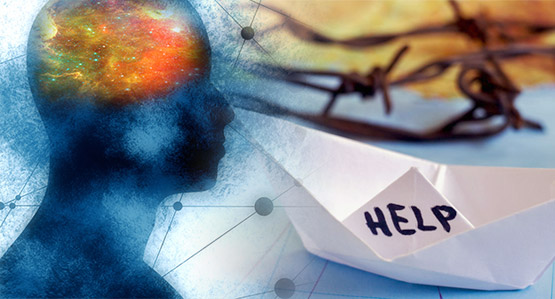The Project
Although the massive migration movement that has brought in 2015 more than one million refugees into European countries has become smaller, it can be expected that many refugees will continue to arrive in Europe in the years to come. This huge task requires not only additional budgets for registration, accommodation, food, medical care and education, but also a large work force. While some of these workers have the respective professional background as psychologists, social workers etc., the overwhelming part of people working with refugees, especially in the NGO and voluntary sector, have their administrational, or other professional background and just their good will to help. But sometimes “well meant is the contrary to good”.

This aspect is especially important when we take into consideration that around half of the refugees who arrive in Europe are experiencing psychological distress resulting from trauma. As many as half of those refugees could be suffering from post-traumatic problems, including post-traumatic stress disorder (PTSD). However, post-traumatic problems are often overlooked, simply because most so-called first-liners – people in direct contact with arriving refugees and asylum seekers – are not aware of them.
The project aims to enable non-specialist refugee-care providers to identify and to give low-level psychosocial support and early low-level mental health interventions to refugees with post-traumatic problems (and PTSD). Specifically:
- To raise the awareness about the occurrence of post-traumatic problems and its symptoms among refugees and asylum seekers and about the possibilities for early low-level mental health interventions.
- To support the continuing professional development of refugee educators (such as teachers, trainers, mentors, etc.) and front–line workers, especially volunteers.
- To develop simple, practical tools (Awareness Raising Guidelines and Action Sheets) to support and inform in a comprehensive way people working with refugees; these tools will contain recommendations and key actions for meeting the needs of refugee and migrant clients, brief modules on the assessment and management of posttraumatic problems and symptoms (including PTSD) and key findings from the research.
- To develop internet and mobile application tools based on the above mentioned tools
The project fits into the common underlying strategy of the partners insofar as the development of guidelines and action sheets for raising the awareness of the effects of psychotrauma on refugees is in line with their research or educational activities and their operative programmes. The transnational cooperation of partners, the majority of them from countries that have been greatly involved in the recent “refugee crisis” will enrich the quality of the results and will render them immediately applicable to help reduce suffering and to increase the ability of refugees and asylum seekers with mental health needs to cope in their integration process.
A synthesis of findings of the “state of art” as well as a review of existing models, policies and initiatives in the different partner countries will influence the development of the different outputs. Target groups and stakeholders which assesses the outcomes of the project, are the principal actors for transferring the results from the project into their activities with refugees and migrants. Dissemination materials as well as several multiplier events are organized in order to spread and promote the outcomes of our project, both at national level in the countries of the partnership and at an European one.
THE STORY BEHIND THE LOGO
Refugees as a (migratory) bird trying to fly again – for this reason the wings are partially open pointing upwards (the first step has been taken), ready to open. One wing is wounded (red color – indicating a trauma, caused by “war’s flame that continues to burn causing αn internal pain”). The red wing is partially hidden behind the body (a trauma is not always visible, but it exists for real and must be properly treated). The blue color is the color of the sky, (the flying to a better future, a hopeful upward glance) – the unlimited sky, a direct connection without borders with refugees’ homeland, freedom of choices, “the head up” for a new life/start at the host country.











